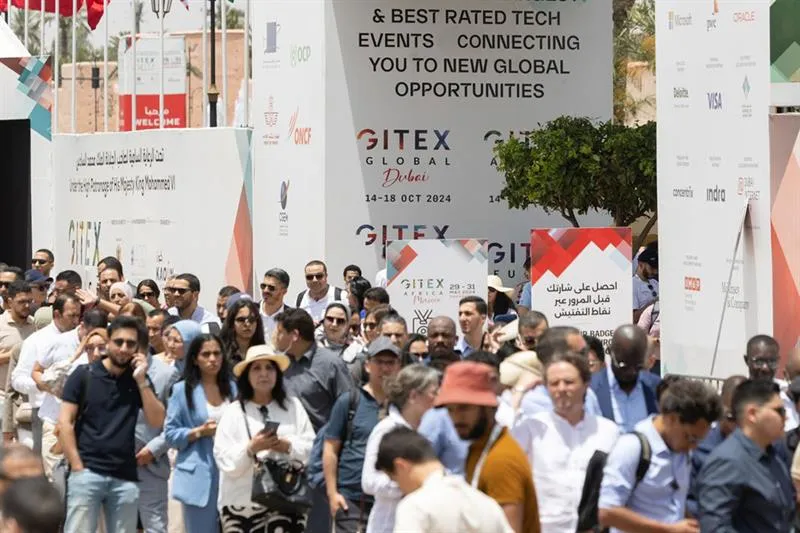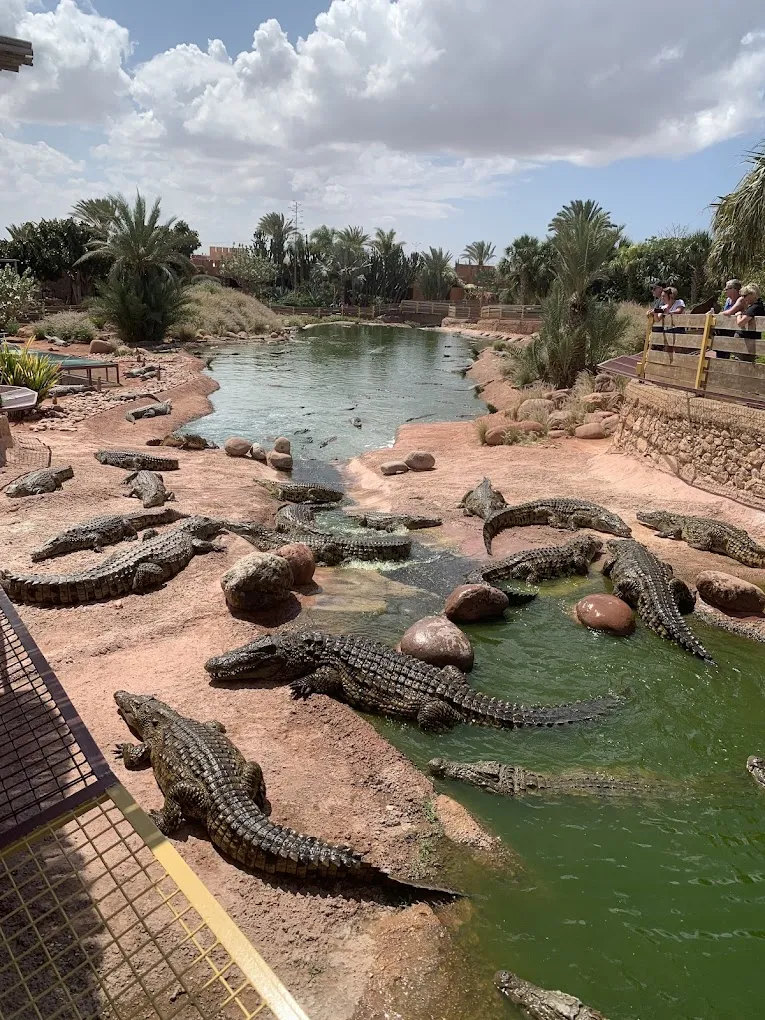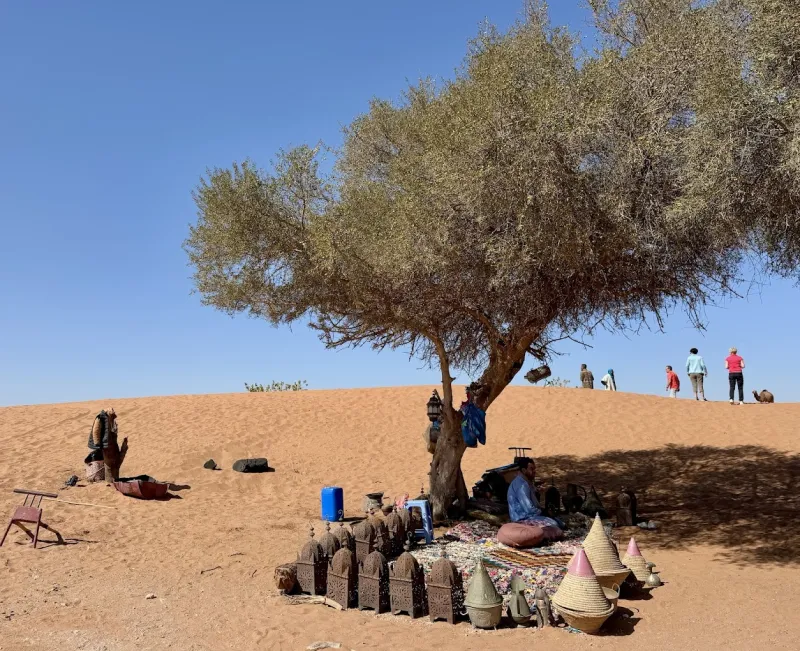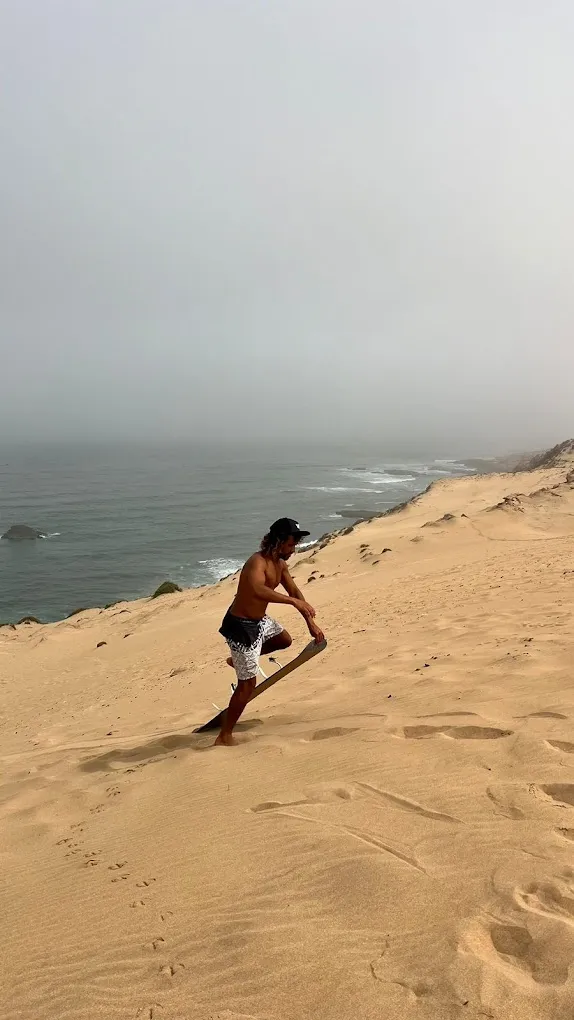Exploring the Souks of Morocco: Everything You Need to Know
20 Jan 2025Morocco, a land of rich cultural heritage and vibrant traditions, is renowned for its bustling markets known as souks. These traditional marketplaces are the beating heart of Moroccan cities, offering an immersive experience that captivates all senses. From the aromatic spices and colorful textiles to intricate handicrafts and lively interactions, the souks of Morocco are a must-visit for any traveler seeking to understand the country's essence. This comprehensive guide delves into the world of Moroccan souks, providing all the information you need to navigate, appreciate, and enjoy these vibrant marketplaces.
Table of Contents
What is a Souk?
A souk (plural: souks) is a traditional marketplace found in many Arab and North African cities. Originating from ancient trading routes, souks have been central to the economic and social life of these regions for centuries. In Morocco, souks are an integral part of the medina (old city) architecture, organized into specific sections based on the types of goods sold. They are vibrant, bustling hubs where locals and tourists alike engage in trade, socialization, and cultural exchange.
History of Moroccan Souks
The history of Moroccan souks is deeply intertwined with the country's position as a crossroads between Africa, Europe, and the Middle East. Established during the Islamic Golden Age, souks were essential for facilitating trade in goods such as spices, textiles, metals, and ceramics. Over time, they evolved into specialized markets, each catering to specific trades and crafts. The architectural design of souks, with their narrow alleyways and interconnected stalls, reflects the intricate craftsmanship and urban planning of medieval Moroccan cities.
Types of Souks in Morocco
Moroccan souks are diverse and specialized, each dedicated to specific types of goods and crafts. Understanding the different types can enhance your shopping experience and appreciation of Moroccan artistry.
Food Souks
Food souks are vibrant sections dedicated to culinary delights. Here, you can find a wide array of fresh produce, spices, dried fruits, nuts, olives, and traditional Moroccan sweets. These souks are a feast for the senses, with the aroma of spices wafting through the air and colorful displays of fruits and vegetables.
Craft Souks
Craft souks are hubs for traditional Moroccan handicrafts. Artisans showcase their skills in areas such as pottery, metalwork, wood carving, and embroidery. These souks are ideal for finding unique souvenirs and supporting local craftsmanship.
Clothing and Textile Souks
These souks specialize in textiles, offering a range of fabrics, garments, and accessories. From traditional Moroccan djellabas and kaftans to contemporary clothing, textile souks are perfect for those looking to purchase stylish and culturally significant attire.
Spice Souks
Spice souks are dedicated to the sale of a vast assortment of spices, herbs, and medicinal plants. Here, you can find essential Moroccan spices like saffron, cumin, coriander, and ras el hanout. These souks are essential for culinary enthusiasts seeking authentic Moroccan flavors.
Jewelry and Metalwork Souks
These souks feature a stunning array of jewelry, including silver and gold pieces, as well as intricate metalwork items. Artisans create beautifully crafted earrings, necklaces, bracelets, and decorative metal items that reflect Moroccan artistic traditions.
Top Souks to Visit in Morocco
Each Moroccan city boasts its own unique souks, each with distinct characteristics and specialties. Here are some of the top souks to explore:
Jemaa el-Fnaa and Souks of Marrakech
Jemaa el-Fnaa is the heart of Marrakech’s medina and one of the most famous marketplaces in Morocco. During the day, it transforms into a lively square filled with street performers, food stalls, and vendors selling everything from leather goods to spices. Surrounding Jemaa el-Fnaa are numerous specialized souks, each dedicated to specific trades such as textiles, pottery, and jewelry.
Must-Visit Sections:
Souk Semmarine: Renowned for textiles, including carpets and clothing.
Souk Ableuh: Specializes in spices and herbs.
Souk Haddadine: Dedicated to metalwork and tools.
Souk Ech Chaouen: Known for colorful rugs and textiles.
Fes Medina and its Souks
The medina of Fes is a UNESCO World Heritage site and one of the largest car-free urban areas in the world. Its souks are renowned for their traditional crafts and high-quality goods. The medina is divided into different quarters, each specializing in specific trades.
Must-Visit Sections:
Souk el Henna: Famous for henna products and traditional cosmetics.
Souk Sebbaghin: Dedicated to leather goods and traditional Moroccan slippers (babouches).
Souk Talaa Kebira: Offers a wide variety of textiles and fabrics.
Souk Talaa Seghira: Known for jewelry and silverware.
Casablanca's Central Market
Casablanca, Morocco’s largest city, offers a more modern souk experience compared to the traditional medinas of Marrakech and Fes. The Central Market is a bustling hub where locals shop for fresh produce, seafood, and everyday essentials.
Must-Visit Sections:
Fish Market: Fresh seafood and live fish.
Fruit and Vegetable Stalls: Wide variety of fresh produce.
Local Specialties: Traditional Moroccan delicacies and street food.
Tangier’s Grand Socco and Souks
Tangier, located at the northern tip of Morocco, has a unique blend of Moroccan and Mediterranean influences. The Grand Socco is a vibrant marketplace that serves as the gateway to the medina, offering a mix of traditional and contemporary goods.
Must-Visit Sections:
Souk Rmel: Known for its marble and stone crafts.
Souk el Attarine: Specializes in perfumes and essential oils.
Souk el Jellaba: Dedicated to traditional Moroccan clothing.
Rabat’s Medina and Souks
Rabat, Morocco’s capital, offers a more relaxed souk experience. The medina is less crowded than those in Marrakech and Fes, providing a more leisurely shopping environment.
Must-Visit Sections:
Souk Zerhoun: Known for pottery and ceramics.
Souk el Jadid: Specializes in textiles and fabrics.
Souk El Abed: Offers a variety of traditional Moroccan crafts and souvenirs.
What to Expect When Visiting a Souk
Visiting a souk is a sensory-rich experience that immerses you in Moroccan culture and daily life. Here’s what you can expect:
Atmosphere and Ambiance
Souks are typically bustling with activity, filled with
Vendors: Friendly and eager to showcase their goods.
Sounds: A mix of languages, music, and the calls of street vendors.
Scents: Aromatic spices, fresh produce, and traditional Moroccan dishes.
Visuals: A kaleidoscope of colors from textiles, ceramics, and other products.
Navigating the Maze
Souks are often labyrinthine, with narrow alleys and interconnected stalls. It's easy to get lost, but this maze-like structure adds to the charm and adventure of exploring these markets.
Tips:
Stay Calm: Take your time and enjoy the exploration.
Use a Map: Some souks have maps available at information points.
Ask for Directions: Locals are generally helpful and can guide you to specific sections.
Interactions with Vendors
Vendors are accustomed to tourists and are generally welcoming. Engaging with them can enhance your experience and lead to discovering unique items.
Etiquette:
Greeting: A simple "Salam Alaikum" (peace be upon you) is appreciated.
Politeness: Being respectful and courteous fosters positive interactions.
Language: Basic phrases in Arabic or French can be helpful.
Essential Tips for Visiting Moroccan Souks
Maximize your souk experience with these practical tips:
Bargaining and Negotiation
Bargaining is a common practice in Moroccan souks and is part of the shopping experience.
How to Bargain:
Start Low: Begin with a lower price than your target.
Be Polite: Maintain a friendly demeanor throughout the negotiation.
Know Your Limits: Decide your maximum price beforehand.
Walk Away: If the price isn't right, politely leave. This can sometimes prompt a better offer.
Cultural Etiquette
Respecting local customs enhances your interactions and experience.
Key Points:
Dress Modestly: Especially when visiting traditional or religious areas.
Respect Personal Space: Be mindful of cultural norms regarding personal interactions.
Photography: Always ask permission before photographing individuals, especially women.
Safety Considerations
While souks are generally safe, taking precautions can ensure a pleasant visit.
Safety Tips:
Secure Your Belongings: Use a crossbody bag and keep valuables hidden.
Stay Alert: Be mindful of your surroundings to avoid pickpockets.
Avoid Flashy Displays: Don’t wear expensive jewelry or flash high-value items.
What to Bring
Essential Items:
Comfortable Shoes: Souks require a lot of walking and navigating uneven surfaces.
Reusable Bag: For carrying your purchases.
Water and Snacks: Stay hydrated and energized, especially during long visits.
Camera: To capture the vibrant scenes, but be respectful when photographing.
Popular Goods and Handicrafts in Souks
Moroccan souks offer a wide array of goods, each reflecting the country's rich artistic traditions.
Spices and Culinary Delights
What You'll Find:
Spices: Saffron, cumin, paprika, ras el hanout, and more.
Herbs: Dried mint, coriander, and other aromatic herbs.
Teas: Traditional Moroccan mint tea blends.
Usage:
Cooking: Enhance your culinary skills with authentic Moroccan spices.
Souvenirs: Bring home the flavors of Morocco.
Textiles and Rugs
What You'll Find:
Berber Rugs: Handwoven rugs with traditional patterns.
Silk and Cotton Fabrics: Used for clothing and home decor.
Tunisian Drapes: Colorful and intricately designed curtains.
Usage:
Home Decor: Add a Moroccan touch to your living space.
Fashion: Purchase unique clothing items and accessories.
Leather Goods
What You'll Find:
Babouches: Traditional Moroccan slippers, often beautifully embroidered.
Bags and Purses: Handcrafted leather bags with intricate designs.
Jackets and Vests: Stylish leather outerwear.
Usage:
Footwear: Comfortable and stylish traditional slippers.
Accessories: High-quality leather accessories make excellent gifts.
Jewelry and Metalwork
What You'll Find:
Silver Jewelry: Earrings, necklaces, bracelets, and rings adorned with traditional motifs.
Copper and Brass Items: Decorative plates, lamps, and utensils.
Metal Carvings: Intricately designed wall hangings and ornaments.
Usage:
Personal Adornments: Beautiful jewelry pieces to complement any outfit.
Home Decor: Unique metalwork items to enhance your living space.
Pottery and Ceramics
What You'll Find:
Tagine Pots: Traditional Moroccan cooking vessels.
Ceramic Plates and Bowls: Hand-painted with vibrant colors and patterns.
Decorative Vases: Elegant and artistic ceramic vases.
Usage:
Cooking: Authentic tagines for preparing Moroccan cuisine.
Dining: Beautiful ceramic tableware for your home.
Decor: Artistic vases and plates as decorative pieces.
Woodwork and Carvings
What You'll Find:
Furniture: Hand-carved wooden chairs, tables, and cabinets.
Decorative Items: Intricate wooden sculptures and wall hangings.
Inlaid Wood: Items featuring traditional Moroccan inlay techniques.
Usage:
Home Furnishings: Unique and handcrafted furniture pieces.
Decorative Accents: Add a touch of Moroccan artistry to your home.
Culinary Experiences in Souks
Souks are not just about shopping; they offer a rich culinary experience that reflects Morocco’s diverse flavors and traditions.
Street Food and Snacks
Must-Try Items:
B’stilla: A savory pastry filled with pigeon or chicken, almonds, and spices.
Harira: A traditional Moroccan soup made with tomatoes, lentils, and chickpeas.
Msemen: Flaky Moroccan flatbread often served with honey or olive oil.
Kebabs and Grilled Meats: Delicious skewers of marinated meat.
Where to Find:
Jemaa el-Fnaa: Numerous food stalls offering a variety of traditional dishes.
Souk el Henna (in Fes): Popular for street food options.
Traditional Moroccan Tea
What to Expect:
Moroccan Mint Tea: A sweet and refreshing tea made with green tea, fresh mint leaves, and sugar.
Preparation: Typically poured from a height to create a frothy top.
Where to Enjoy:
Cafés within Souks: Relax and enjoy tea while observing the lively market activities.
Tea Stalls: Many vendors offer freshly brewed tea to complement your shopping experience.
Cultural Significance of Souks
Souks are more than just marketplaces; they are cultural institutions that play a crucial role in Moroccan society.
Economic Role
Souks are vital to the local economy, providing livelihoods for thousands of artisans, traders, and vendors. They serve as the primary venues for the exchange of goods and services, fostering economic sustainability and community development.
Social Hub
Souks are social gathering places where people meet, interact, and exchange news. They strengthen community bonds and preserve traditional social structures, making them integral to daily life in Moroccan cities.
Preservation of Tradition
Through the sale and creation of traditional crafts, souks help preserve Morocco’s rich cultural heritage. They ensure that artisanal skills and traditional techniques are passed down through generations, maintaining the authenticity and uniqueness of Moroccan craftsmanship.
Conclusion
The souks of Morocco offer an unparalleled glimpse into the country's vibrant culture, rich history, and artistic heritage. Whether you're a seasoned shopper, a culinary enthusiast, or a cultural explorer, the souks provide an immersive experience that caters to all interests. By understanding the different types of souks, knowing what to expect, and following essential tips, you can navigate these bustling marketplaces with confidence and appreciation. Embrace the lively atmosphere, engage with the friendly vendors, and discover the myriad treasures that Moroccan souks have to offer.
Safe Travels!
Embarking on a journey through Morocco’s souks promises a treasure trove of experiences that blend tradition, artistry, and vibrant street life. Whether you're wandering through the maze-like alleys of Marrakech, exploring the historic medina of Fes, or enjoying the coastal charm of Tangier, the souks invite you to immerse yourself in the authentic spirit of Morocco. Embrace the adventure, savor the flavors, and let the colorful world of Moroccan souks leave an indelible mark on your travel memories.
Hi, I'm Camila Elise. I'm a passionate writer and design enthusiast at rents.ma, blending modern insights with the timeless elegance of Moroccan culture. Join me as I explore innovative ideas to transform your living space into a true reflection of your style.




